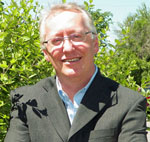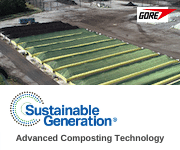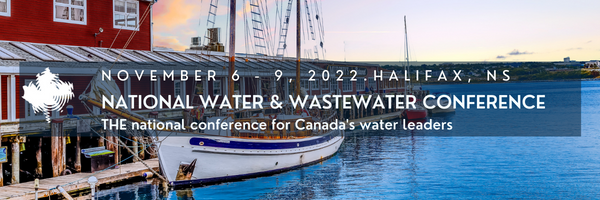 |
||||||||||||||||
| Subscribe | Past Issues | www.cwwa.ca | Water Source Magazine | ||||||||||||||||
|
CWWA News
As I write this, barely a few days have passed since Hurricane Fiona hammered our East Coast. The damage has been unbelievable to see on television. I can't imagine what it was like for those of you living through this. Our thoughts are with all of our colleagues affected by this storm.
Federal Initiatives
Environment and Climate Change Canada and Health Canada have published a notice of intent to address The Government of Canada intends to move forward with activities to address the broad class of per- and polyfluoroalkyl substances. On August 26, 2022, the Hon. Steven Guilbeault, Minister of Environment and Climate Change, announced the launch of the Net-Zero Challenge, a new national voluntary initiative for businesses operating in Canada. Businesses that join the Challenge commit to implementing credible and effective plans to transition their facilities and operations to net-zero emissions by 2050. The government has launched consultations on the Guidelines for Canadian Recreational Water Quality – Microbiological pathogens and biological hazards. The proposed technical document for these guidelines outlines potential health risks from exposure to pathogenic microorganisms and other biological hazards from recreational waters. It is available for public comment from September 3, 2022, to November 2, 2022. The intent of this document is to provide stakeholders with guidance on waterborne pathogens in drinking water, with the objective of minimizing public health risks in Canadian water systems. Elements of this strategy include source water protection, treatment requirements based on health-based treatment goals for enteric protozoa (Giardia and Cryptosporidium) and enteric viruses, and minimizing microorganism survival and growth in drinking water distribution systems. The technical document for these guidelines is available on the Water Quality website at: Statistics Canada released the latest release of Canada’s Core Public Infrastructure (CCPI) survey. The Survey measures the stock, condition and performance of assets owned by Canadian governments. While the survey examined several infrastructure categories, this report specifically addressed water infrastructure. According to the report, municipalities are responsible for the vast majority of public water utilities as they accounted for more than 96% of the organizations who reported water infrastructure in 2020. These assets require a significant amount of capital investments. According to the Annual Capital and Repair Expenditures Survey, 28% of total capital spending on infrastructure by municipal, local and regional governments in 2020 was on water and sewer infrastructure. The report also addressed the condition and maintenance of underground infrastructure as well as asset management planning. Member News
Water Canada Have you ever had a great idea, and thought: “Huh, somebody should really get on that!” Well, that’s pretty much how Water Canada’s Downstream program was born. Past Water Canada editors, in conversation with industry partners, found themselves commiserating about how difficult it is to attract and retain young talent in the Canadian water sector. But how could we connect students with industry experts in a meaningful way? Fast forward to June 2022, where we celebrated the successful launch of Downstream: A speed networking event designed to bring current and future generations of water industry professionals (affectionately, “water nerds”) together to cultivate an inclusive, diverse, and thriving water sector. Downstream will be featured as part of our NWWC 2022 in Halifax, NS. More information on the Halifax installment of this great program is available from the NWWC website. Provincial News
The Water Information Directory allows each user to quickly search for public, governmental and non-governmental documentary references (research reports, laws and regulations, guides, video clips, etc.), data and water-related websites. Filters can be used to refine the search and sorting to order the results. Snippings & Clippings
NPR The vast majority of Puerto Rican homes have been plunged into darkness after Hurricane Fiona wiped out the power grid, but people on the island are facing another devastating emergency: How to access clean water? Water Canada Leading figures in the global water community are gathered in Copenhagen Denmark, 11-15 September 2022, at the International Water Association’s World Water Congress & Exhibition. ES&E Magazine When her father, a commercial fisherman, was finding it more and more difficult to ply his trade due to harmful algal blooms, 16-year-old Annabelle Rayson decided it was time to fight blooms in the Great Lakes. ES&E Magazine The University of Waterloo is leading an interdisciplinary research team that hopes to unlock key information that will inform Canadian water systems about potential PFAS contaminants and treatment options that could impact millions of Canadians. Water Canada Communities and governments are working together to prepare for and adapt to impacts of climate change, helping to improve quality of life for Canadians in higher-risk areas, and reduce the costs of disasters. In Canada, flooding is the most common and costly natural disaster, causing approximately $1.5 billion in damage to households, property, and infrastructure annually, with residential property owners bearing approximately 75% of uninsured losses each year. Water Canada One of the most tangible and costly effects of global climate change is major, often catastrophic, floods. In Canada, where upwards of seven million people live in either a coastal or riverine flood plain, it's clear that the impact of climate change-driven massive precipitation events, spring freshets, and rising lake levels have been taking an increasingly heavy toll on Canadian communities in recent years. Wall Street Journal (paywall) America has a drinking water problem. The 2.2 million miles of pipes that carry water into homes, businesses and public places are breaking. Many of the roughly 145,000 public water systems' treatment facilities that make water safe to drink are decaying. And a growing number of the pumps and pipelines that funnel water from reservoirs and rivers are failing. Associated Press The Environmental Protection Agency moved Friday to designate two “forever chemicals” used in cookware, carpets and firefighting foams as hazardous substances, a step that would clear the way for quicker cleanup of the toxic compounds, which have been linked to cancer and other health problems. AP News In many cities, no one knows where the lead pipes lie underground. That’s important because lead pipes contaminate drinking water. After the lead crisis in Flint, officials in Michigan accelerated efforts to locate their pipes, a first step toward removal. CNBC make it The idea of drinking water that was recently sewage swirling down your toilet bowl, shower drain, or kitchen sink may sound pretty icky. But experts say it's actually nothing to be squeamish about — and it might be coming to your state and city soon. Water Canada As solids are broken down by bacterial and physical actions in sewage treatment, large volumes of gases are generated. Known as "biogas," these gases which are full of impurities, have long been allowed to vent into the atmosphere, contributing to the malodorous air associated with wastewater treatment. Thankfully, more modern wastewater facilities are capturing and safely incinerating or flaring their biogas, and in recent years, some plants have begun adding portions of their biogas to commercially sourced natural gas and burning the mixture to produce steam or modest amounts of electricity, while still flaring most of their biogas. Calgary's Bonnybrook Wastewater Treatment Facility is one such site. |
||||||||||||||||




